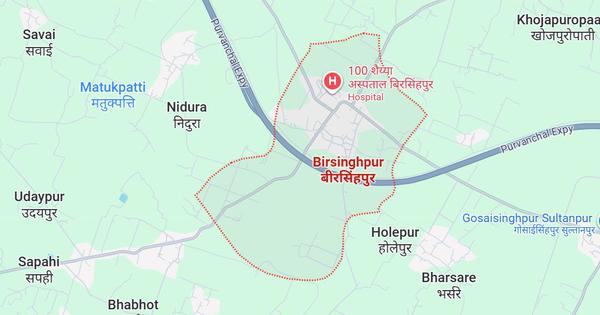How media twisted Allahabad HC’s words: A judgment on forced conversion and trafficking turned into a clickbait tale of ‘unsaid words can cause communal tensions’
In a clear display of bias against the Allahabad High Court, some media outlets published misleading headlines about a recent order of the High Court, which dismissed the petition of a person charged with disturbing communal harmony, seeking the quashing of an FIR against him. Reporting about the High Court order, Live Law published a report with the headline “Unsaid Words Can Also ‘Promote Enmity’ Under BNS: Allahabad High Court On ‘Subtle’ Religious Undertones In WhatsApp Message”. A plain reading of the headline suggests that the High Court made out an offence where there was none. Similarly, The Scroll also emphasised the words “Even ‘unsaid’ words can amount to promoting enmity” in the headline of its report on the Allahabad High Court order, insinuating that the High Court wrongly inferred an offence while no act was committed to constitute the offence. Another media portal, Law Chakra, also used a similar language regarding the High Court order. Its headline read, “Even Unsaid Words Can Spark Communal Tension: Allahabad High Court”. The abovementioned reports relate to a judgment of the Allahabad High Court dated 23rd October, passed by a division bench of Justices JJ Munir and Pramod Kumar Srivastava. The verdict was passed by the judges after the hearing of a petition filed by an individual booked under Sections 299 and 353(3) of the Bharatiya Nyay Sanhita, 2023. The petitioner, Afaq Ahmad, sought the quashing of the FIR filed against him for circulating inflammatory WhatsApp messages after his brother was arrested in a religious conversion case. “The petitioner, making this arrest of his brother in the case crime last mentioned, a foundation for disturbing communal peace and outraging religious feelings of a class of citizens of India, maliciously sent an inflammatory message to individuals on their mobile phones,” the High Court stated in its order. Explaining the intent of the inflammatory messages shared by the petitioner, the High Court said that in the message, the petitioner alleged that his brother was implicated in a false case because he belonged to a particular religious community. “The words of the post quoted in the FIR may not speak per se about religion, but definitely convey an underlying and subtle message that his brother has been targeted in a false case, because of his belonging to a particular religious community. These unsaid words in the message prima facie would outrage religious feelings of a class of citizens hailing from a particular community, who would think that they are being targeted because of belonging to a particular religious community,” the court stated. While the media outlets selectively picked the words used by the High Court, the entire statement of the court reads as, “Quite apart, and, even if one were to think that no religious feelings of a class of citizens or community have been outraged, per se by the WhatsApp message, it is certainly a message, which, by its unsaid words, is likely to create or promote feelings of enmity, hatred and ill-will between religious communities, where members of a particular community, in the first instance, could think that they are being targeted by members of another religious community by abusing the process of law”. It is clear from the statement of the High Court that the inflammatory message sent out by the petitioner attempted to promote feelings of enmity, hatred and ill-will between religious communities in an indirect manner, without using express words. Notably, the petitioner sent the message to multiple persons to expand its reach. Maintaining that a prima facie case was made out against the petitioner, the High Court rejected his request for quashing the FIR against him. “In the totality of circumstances, we are of the opinion that this is a matter which requires investigation and cannot be scuttled at an incipient stage, foreclosing probe that must be carried to its logical conclusion,” the High Court noted. It is evident from reading the High Court’s order in its entirety that the media portals attempted to attribute a malicious intent to the High Court in its decision on the petition. While the High Court explained how the petitioner tried to disrupt religious harmony through his inflammatory message in an indirect manner, the media portals cleverly focused on a set of words to raise suspicion about the intent of the High Court.



Reporting about the High Court order, Live Law published a report with the headline “Unsaid Words Can Also ‘Promote Enmity’ Under BNS: Allahabad High Court On ‘Subtle’ Religious Undertones In WhatsApp Message”. A plain reading of the headline suggests that the High Court made out an offence where there was none.

Similarly, The Scroll also emphasised the words “Even ‘unsaid’ words can amount to promoting enmity” in the headline of its report on the Allahabad High Court order, insinuating that the High Court wrongly inferred an offence while no act was committed to constitute the offence.

Another media portal, Law Chakra, also used a similar language regarding the High Court order. Its headline read, “Even Unsaid Words Can Spark Communal Tension: Allahabad High Court”.

The abovementioned reports relate to a judgment of the Allahabad High Court dated 23rd October, passed by a division bench of Justices JJ Munir and Pramod Kumar Srivastava. The verdict was passed by the judges after the hearing of a petition filed by an individual booked under Sections 299 and 353(3) of the Bharatiya Nyay Sanhita, 2023. The petitioner, Afaq Ahmad, sought the quashing of the FIR filed against him for circulating inflammatory WhatsApp messages after his brother was arrested in a religious conversion case.
“The petitioner, making this arrest of his brother in the case crime last mentioned, a foundation for disturbing communal peace and outraging religious feelings of a class of citizens of India, maliciously sent an inflammatory message to individuals on their mobile phones,” the High Court stated in its order. Explaining the intent of the inflammatory messages shared by the petitioner, the High Court said that in the message, the petitioner alleged that his brother was implicated in a false case because he belonged to a particular religious community.
“The words of the post quoted in the FIR may not speak per se about religion, but definitely convey an underlying and subtle message that his brother has been targeted in a false case, because of his belonging to a particular religious community. These unsaid words in the message prima facie would outrage religious feelings of a class of citizens hailing from a particular community, who would think that they are being targeted because of belonging to a particular religious community,” the court stated.
While the media outlets selectively picked the words used by the High Court, the entire statement of the court reads as, “Quite apart, and, even if one were to think that no religious feelings of a class of citizens or community have been outraged, per se by the WhatsApp message, it is certainly a message, which, by its unsaid words, is likely to create or promote feelings of enmity, hatred and ill-will between religious communities, where members of a particular community, in the first instance, could think that they are being targeted by members of another religious community by abusing the process of law”. It is clear from the statement of the High Court that the inflammatory message sent out by the petitioner attempted to promote feelings of enmity, hatred and ill-will between religious communities in an indirect manner, without using express words. Notably, the petitioner sent the message to multiple persons to expand its reach.
Maintaining that a prima facie case was made out against the petitioner, the High Court rejected his request for quashing the FIR against him. “In the totality of circumstances, we are of the opinion that this is a matter which requires investigation and cannot be scuttled at an incipient stage, foreclosing probe that must be carried to its logical conclusion,” the High Court noted.
It is evident from reading the High Court’s order in its entirety that the media portals attempted to attribute a malicious intent to the High Court in its decision on the petition. While the High Court explained how the petitioner tried to disrupt religious harmony through his inflammatory message in an indirect manner, the media portals cleverly focused on a set of words to raise suspicion about the intent of the High Court.





























































































